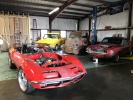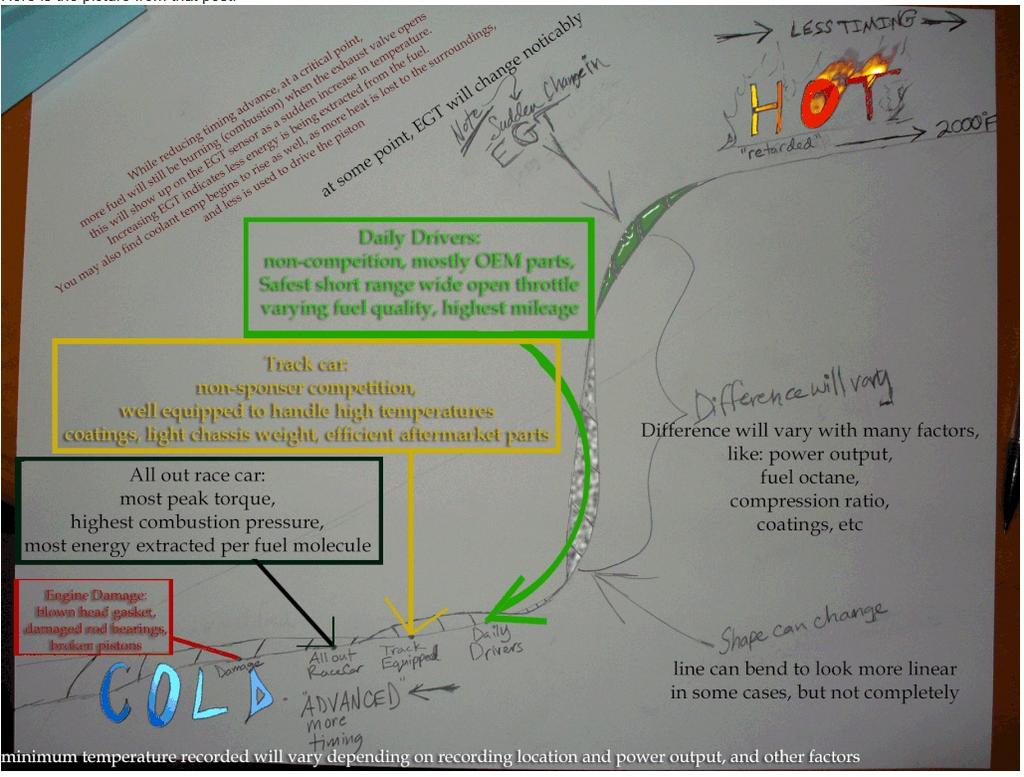
Originally Posted by
kingtal0n

Ah, the old MBT. Never tune to MBT lol. Its a scam. It may wreck rod bearings if you are adding timing to MBT for most vehicles on a dynometer at WOT. It might take 4 to 10 years though so I find some people still try that tactic without realizing the long term health effects.
This is a deep topic, but it may be expressed simply.
Say you load the vehicle lightly on a dyno and dial timing up to MBT. Now, how did you arrive at the necessary air fuel ratio? Lets say you choose 15.5:1 air fuel and 45* btdc of timing for a cruise with some load. We must ask: can the engine make the same torque using more load (airflow throughput), more or less timing, and less fuel, thereby increasing fuel economy? And when the vehicle hits the actual road, will it still maintain those values as safe and consistently? Probably not...
As an aside, how will we maintain 15.5:1 air fuel ratio, without a closed loop wideband control? What will you do to ensure if a/f wanders beyond optimal it can be compensated for?
Also, how is the load from the actual road going to be different from the personally selected Dynometer load? And how will that influence timing values found on the dyno.
There are hurdles to dyno tuning for economy in terms of torque alone. We can play with timing and air fuel but how can we replicate that exact load condition for all true road circumstances, such as wind resistance? all the variables I mentioned will reflect timing and fuel quality concerns, while air fuel ratio has its own slew of individual components, cylinder volume, temperature, rate of piston descent (volume of cylinder changes at some rate), even the quality of the combustion chamber and piston surface design will play a role in fuel behavior given some a/f and timing input values.
A dyno is to get 'within range' and the real tuning is done on the race track (or street track as it were) for the most part, I find.
For WOT (I know we are discussing cruise but MBT concerns mostly WOT behavior):
I feel that as we become experienced tuners we intuitively avoid MBT(max torque setting) for performance vehicles and instead opt for 'minimum best timing' which is the least ignition angle which still gets the engine within some acceptable percentage of maximum torque while maintaining a safe EGT.
This is because as conditions change (all of this has been about varying wandering conditions) such as higher IAT or increased EGT retention due to drive time, ambient temps, whatever. The increase in temperature will also increase combustion reaction rate, which will call for a reduced timing input (decreased btdc timing angle).
Thus fuel quality and fuel behavior must be taken into account whether we are timing tuning WOT or cruise situations. If you don't leave headroom on the table for the instantaneous load function and rising temps, then the exact value of timing that gave Max Torque will be a dangerous place in an instant.
Such graphs often appear spiky, wavy, a combination of spikes and oscillations, indicating too much timing, and over representing torque figures due to spikes.
I think this is why MBT gradually became more well accepted at "minimum best timing" because eventually people realized max torque wasn't the answer to anything, especially not WOT. Since conditions are moving, and sensors are retrospective.... the load increases and THEN then sensor knows. Which means whatever timing value you have for max torque is going to be used the instant the load increases before sensors can catch up. Making it a dangerous place to be for an instant.
Basically you can find some optimal fuel use on the dyno. But when you hit the actual road, if the vehicle is heavier for example, more difficult to push the real thing. It will desire more airflow, reduced timing, more fuel flow. And adjustments which reflect into improved economy for the real road conditions often involve moving air fuel ratio, tire conditions, gear ratios, etc... In other words, you may find 0.5mpg increase from delicately setting the timing values, but alternatively the vehicle gearing (Cruise RPM For a large engine for example) may offer far superior economy adjustments, 2 to 4mpg increases from dropping the cruise RPM of a large V8 engine for example. And then go back and optimize the air fuel and timing by driving long distances and comparing. There is no way to really simulate that on any kind of dynometer, driving along some road conditions changing for an hour or whatever.





 Reply With Quote
Reply With Quote



